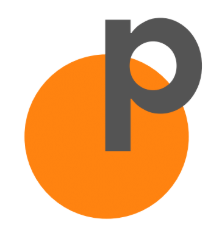Packaging industries today use many printing methods and techniques – each one with its own particular use and merits.
If you are a small business owner or a marketing specialist, it’s worth knowing the standard printing techniques and how you can apply them to selected products and packages.
Many business owners undervalue or underappreciate the importance of good-quality printing. For some, on the other hand, it’s a trade secret. Seasoned business owners know that product packaging and its design considerations greatly enhance customer experience and brand perception.
Printing techniques may not always be disclosed, and consumers may be uninterested in finding out about them. However, it’s still essential to have a nifty little bit of background.
Who knows, once you do, you may want to upscale on your current methods! Here are 6 common techniques to get started.
Four-colour lithography
The Four-colour Process is the most commonly used method for printing full-colour images.
Besides, with its widespread use – it’s affordable as well!
This particular method makes use of four semitransparent or translucent inks: cyan, magenta, yellow, and black, commonly abbreviated as CMYK.
By overlapping these colours in various concentrations, thousands of colours can be reproduced – making way for some vibrant or plain and simple packaging; depending on the colours you’re mix and matching!
In essence, it’s perfect for books, magazines, brochures, calendars, and other printed items containing full-colour images.
Spot colour printing
Once again, we have lithography – but in the form of three or fewer colours.
Spot colour inks are special formulations applied individually in layers; they are designed to print alone rather than blend with other inks on the paper.
Limiting the number of colours can reduce printing costs; in fact, spot printing can be even more affordable if your design involves fewer than four colours.
Another plus point?
Spot colours also often portray colours far more accurately than four-colour lithography, so if your design is colour-critical, such as in a corporate logo, you should definitely go for spot printing!
Flexography
By using a flexible plate that adapts to different surface textures and dimensions – it is none other than flexography!
The substrate is fed into the press from a roll and is pulled through a series of print stations, where each unit prints a single colour to form the image.
This unique printing method can be used to print product labels, corrugated containers, folding cartons, plastic bags, paper sacks, beverage cartons, disposable cups, gift wrappers, newspapers, and many others.
It’s a work of wonders and absolutely perfect for long print runs and large orders!
Laser etching
Laser etching is a precision printing method used to mark or brand surfaces such as glass, metal, wood, and plastic.
Usually, you’ll find that a computer is used to drive the movement of a laser over these substrates – wowzers.
And we’re not done just yet!
With laser etching, you can easily even etch on plastic, customise wood products, engrave glasses and ceramic items, mark metal plates, and print on fabric and textiles.
Screen printing
Also known as silk screening or serigraphy – screen printing is an extremely versatile printing process.
Why, you may ask?
It’s a type of printing method that’s especially convenient on substrates other than paper that cannot be fed through a standard printing press.
And on the plus side – it can be applied on paper, paperboard, plastics, glass, metals, fabrics, and a wide variety of substrates.
Foil stamping
Foil stamping is a technique that creates dimensions on paper, cardboard, metal, plastic, and other substrates.
In fact, execution is done the simplest, even at a cost-effective price to boot; all by using a metal stamp to transfer a foil into a substrate.
Say, book covers, wedding invitations, corporate stationery, business cards, decorative packaging, or red packet printing – you’re all set for some style.
Conclusion
Printing methods and techniques out there are aplenty, with each one suited for a particular application. Moreover, with proper utilisation of printing techniques – you can certainly bump up cost-effectiveness and brand presentation for your business!
With that said, if you’re looking for a pop colours or a design that speaks simplicity – our wide variety of packaging products and comprehensive design services have got your back. Explore our offerings like custom tote bags, paper bags, calendars, and window boxes. Print&Pack is here to satisfy your every packaging and design need.






